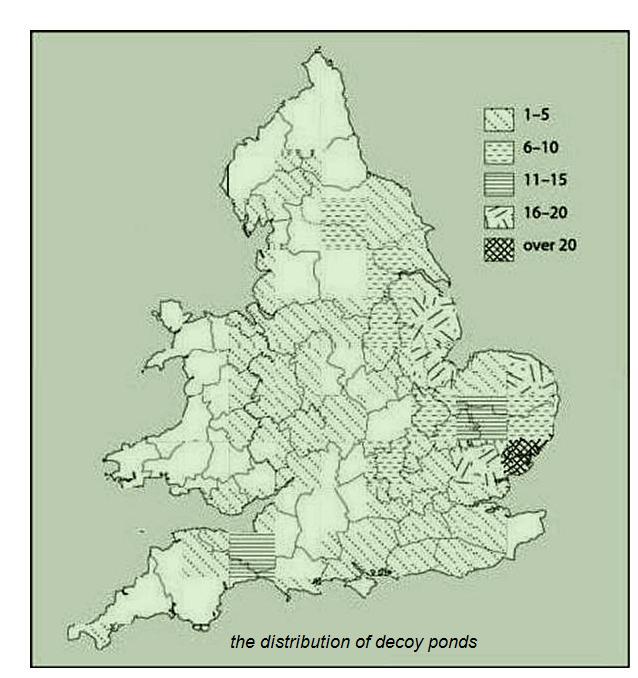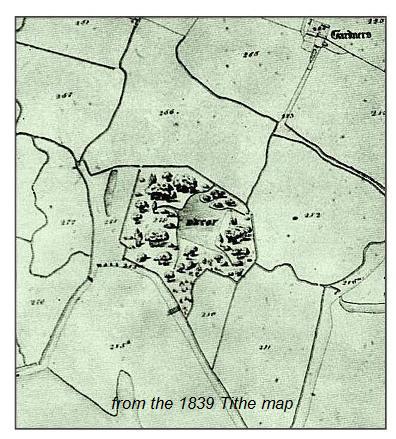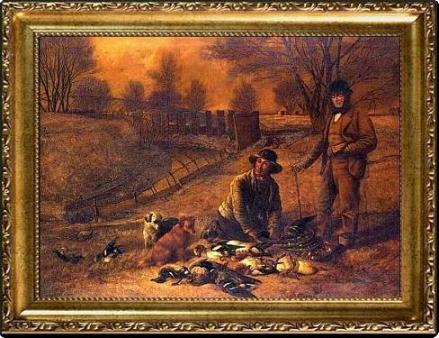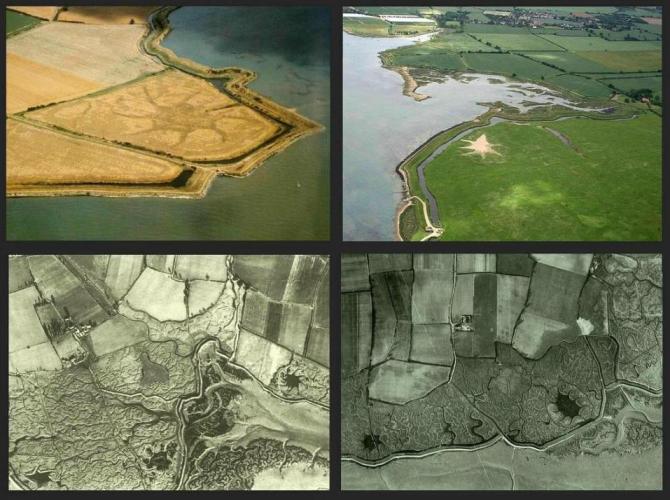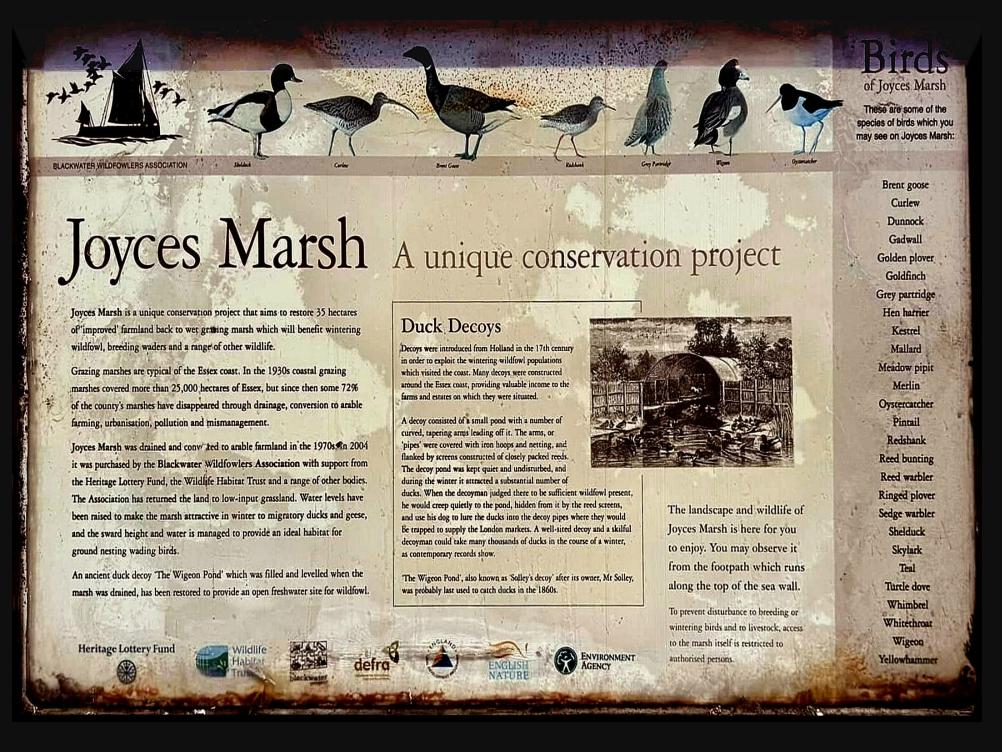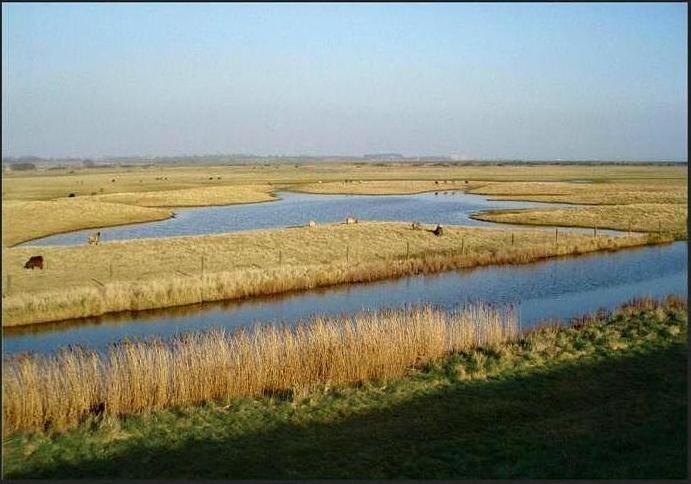|
The Goldhanger Decoy
Ponds |
|||
|
o this estuary is the largest on the east
coast o the north bank is low lying resulting in
extensive salt marshes o it was relatively remote and unpopulated,
unlike the Thames Estuary o the high concentration of clay ensured that
the pools did not drain away at low tide It
also seems that most the decoy ponds in the UK were on the Essex coast, as
indicated by this map... |
|||
|
The
ponds were "star" or "octopus" shaped with between four and eight
"pipes". Documents available today reveal that they were mainly in
use in the 17th & 18th centuries but could have existed much earlier.
They were on the land-side of the seawall
where it existed with "hatches" through the wall. The Highams Hatch
at the Shoe is the remains of one such hatch. Tame ducks and trained dogs
were used to lure wildfowl up the pipes and into traps. The catches were sent
to Leadenhall Market every day by horse and cart. Mallard, Curlew, Teal and Wigeon were the
main catch. |
|||
|
The
decoy ponds were on private land, were well protected by ditches and fences,
and were in remote locations. They were usually worked by one man, or a
father and son. They purposely shrouded their operation in mystery and gave
misleading reports about their methods and productivity, resulting in little
documentation from the period. The Decoy man typically rented a large amount
of surrounding land, mostly remote salt marsh with low wet meadows in the
vicinity, helping to keep trespassers away and to create a ‘natural’
solitude. The Decoy man would supplement his income by grazing sheep or
cattle on the dryer parts of the land. ____________________________________ |
|||
|
Most,
if not all, of the literature about decoy ponds available today has been
written long after they ceased to operate, but nevertheless it is still very
informative. Here are some examples held in DPF format, with the most recent
extracts first... |
|||
|
Local
historian and author Maura Benham realised the
significance of the local decoy ponds and devoted several pages to this
subject in Goldhanger - an Estuary Village published in 1977. an illustration from the book of Gardners Farm Decoy... pages 51,52 and 83 can
be seen here... extracts from Goldhanger - an Estuary Village In
1890 Essex historian Miller Christy wrote at
even great length about Essex and Goldhanger decoy ponds in his book
entitled: Birds of Essex which has a chapter headed: Wild-fowl Decoys and Wild
Fowling in Essex. The chapter identifies a total of 31 decoy
ponds in Essex, of which 7 are on the north bank of the Blackwater near to
Goldhanger. The chapter also includes many extracts from previous authors who
had first-hand experience of the working ponds, including... Daniel
Defoe, Philip Morant, The Revd J C Atkinson and E A Fitch 7
pages of extracts from Christy’s book can be seen here...
Birds of Essex: Wild-fowl Decoys and Wild Fowling in Essex The chapter included these
illustrations... select to enlarge and zoom-in on any
of the images on this page The Wild-fowler: a
Treatise on Ancient and Modern Wild-fowling
written by Henry Coleman Folkard in 1864 also contains several pages
about decoy and ‘flight ponds’. extracts
can be seen here...
The Wild-fowler In
1818 William Marshall wrote Review of County Reports - Eastern
Department which contains an interesting reference to
Mr Lee’s Decoy at Goldhanger. the
extract can be seen here...
Review of County Reports ____________________________________ |
|||
|
Several newspaper articles from the
past have been found that refer to the local decoy ponds... select to enlarge and zoom in ____________________________________ |
|||
|
Famous
Maldon artist Robert Nightingale (1815 – 1895) painted this Decoy Pond at Tillingham Marshes scene ____________________________________ |
|||
|
Here
are some aerial photos showing local ponds... |
|||
|
cropmarks
near The Shoe in 1992 three
decoy ponds at Laristons in 1947 |
Laristons
in 2010 two
decoy ponds east of Tollesbury in 1955 |
||
|
____________________________________ In
2004 The Blackwater
Wildfowlers Association acquired land at “Joyces Marsh” close to
Goldhanger (show with a blue arrow on the map at the top of this page) that
included one of the original local decoy ponds. The Association has since
restored the pond and maintains it as a no-shooting
zone and haven for wintering wildfowl, and has also been given a conservation
award by the Council... |
|||
|
Here
is the main wording on the Joyces Marsh sign: Joyces Marsh is a unique conservation project that aims to restore 35
hectares of ‘improved’ farmland back to wet grazing marsh which will benefit wintering
wildfowl breeding waders and a range of other wildlife. Grazing marshes are typical of the Essex coast. In the 1930s coastal
grazing marshes covered more than 25,000 hectares of Essex, but since then some
72% of the county’s marshes have disappeared through drainage, conversion to
arable farming, urbanisation, pollution and mismanagement. Joyces Marsh was drained and converted to arable farmland in the
1970s. In 2004 it was purchased by the Blackwater Wildfowlers Association
with support from the Heritage Lottery Fund, the Wildlife Habit Trust and a
range of other bodies. The Association has returned the land to low-input
grassland. Water levels have been raised to make the marsh more attractive in
winter to migratory ducks and geese, and the sward height and water is
managed to provide an ideal habitat for ground nesting wading birds. An ancient duck decoy, ‘The Wigeon Pond’, which was filled and
levelled when the mash was drained, has been restored to provide an open
freshwater for the wildlife. |
|||
|
The Mersea Museum has an long article written by Elaine Barker
about decoy ponds on Mersea Island and elsewhere which includes extensive background information
on decoy ponds generally and is at... www.merseamuseum.org.uk/.../PH01_DOY ________________________________________________________________________________ |
|||

